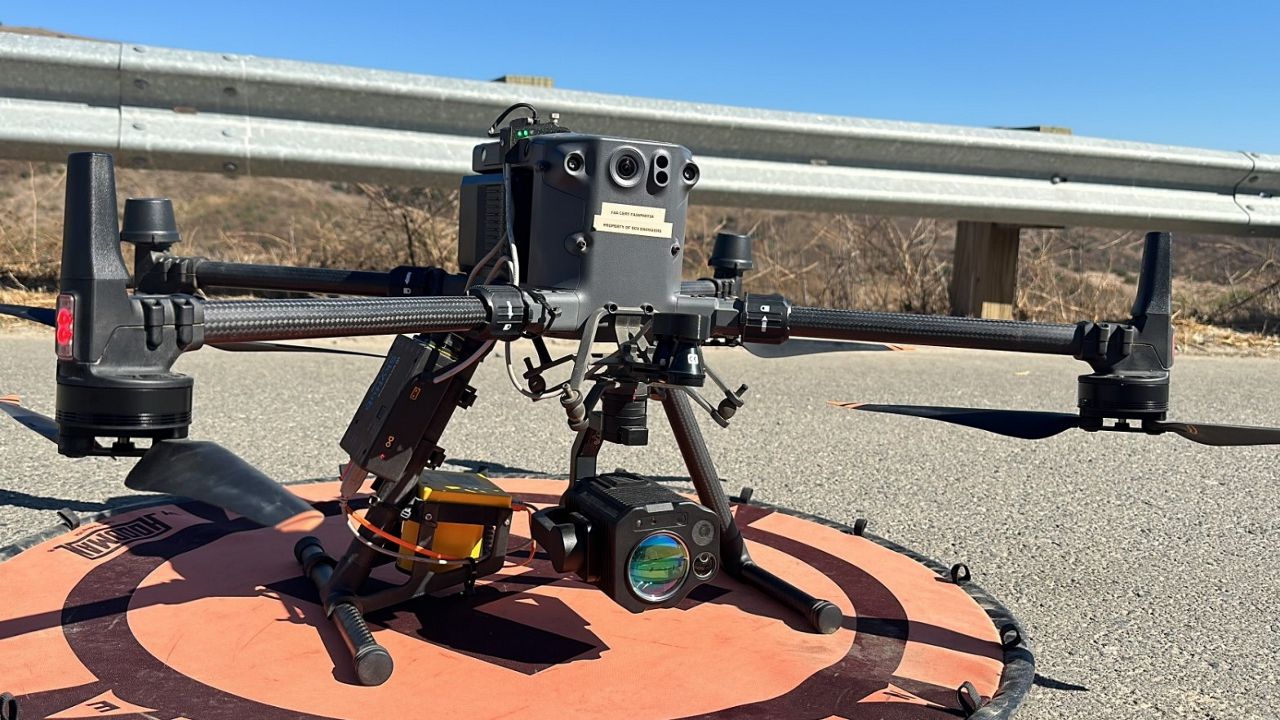IRVINE, Calif. — Drone technology is taking landfill inspections to new heights at the Frank R. Bowerman Landfill in Irvine.
For years, staff across landfills in California have physically walked the terrain scanning for methane leaks. The process is time consuming, while methane gas leaks are a race against time.
This is why Orange County Waste and Recycling has a pilot program adopting drone technology into its approach to detect these leaks faster.
In the past couple of months, drones equipped with thermal cameras have been flying around the over 500-acre Frank R. Bowerman landfill. The drones then pinpoint exactly where leaks are coming from, allowing staff to quickly seal the leaks.
David Wong, who oversees the program, explains the drone technology also produces a map of the facility, providing up-to-date data on the quantity of emissions.
"With the current system where we have to have a team with methane detectors walk the entire landfill, it will take at least two days. With the drone, I would say we can definitely cover it twice in one day," Wong said.

Being able to cut down the time it takes to find a leak is crucial, as California landfills produce 22% of the state’s total methane emissions, according to the California Air Resources Board.
The faster they can address these emissions, the better air quality they will have as methane is a greenhouse gas that traps more heat than carbon dioxide contributing to climate warming and air pollution.
David Tieu, deputy director of the landfill, explains they can’t stop the production of methane as it happens when the buried waste starts naturally decomposing, but they do try to prevent that gas from hitting our atmosphere.
"Although we try to use soil to cover it up to prevent the emissions from going into the atmosphere, what happens is the landfill is a living, breathing thing, and so there's going to be surface cracks. There's going to be exposure," Tieu said.
It is why Tom Koutroulis, director of OC Waste and Recycling, explains the drones are a high-tech fix for an environmental concern.
"What this technology allows us to do is improve the frequency and increase the frequency of which we do these inspections and are able to find surface leaks much more immediately and address them quickly. So ultimately, the use of this technology will improve the overall efficiency of what now is a very antiquated process," Koutroulis said.
The EPA is still weighing the technology, not yet accepting the drone reports as official records. Although Koutroulis said it has helped them bring their emissions down and a change in that record keeping approval is expected.
"Regarding the EPA and current regulations and language, we're hopeful that with that new language and changes that are anticipated by maybe the end of this year or maybe early next year, we'll see something that will be adopted that will allow us to use the best available technology within the industry where this technology and reporting is accepted," Koutroulis said.
The reports are conducted and reviewed by a third-party company to remain transparent. That brings an additional cost, but Wong says is still more efficient than what they’ve been doing for the past decade.
"Hopefully the rest of the industry will fall in line and hopefully it's beneficial for them too," Wong said.



